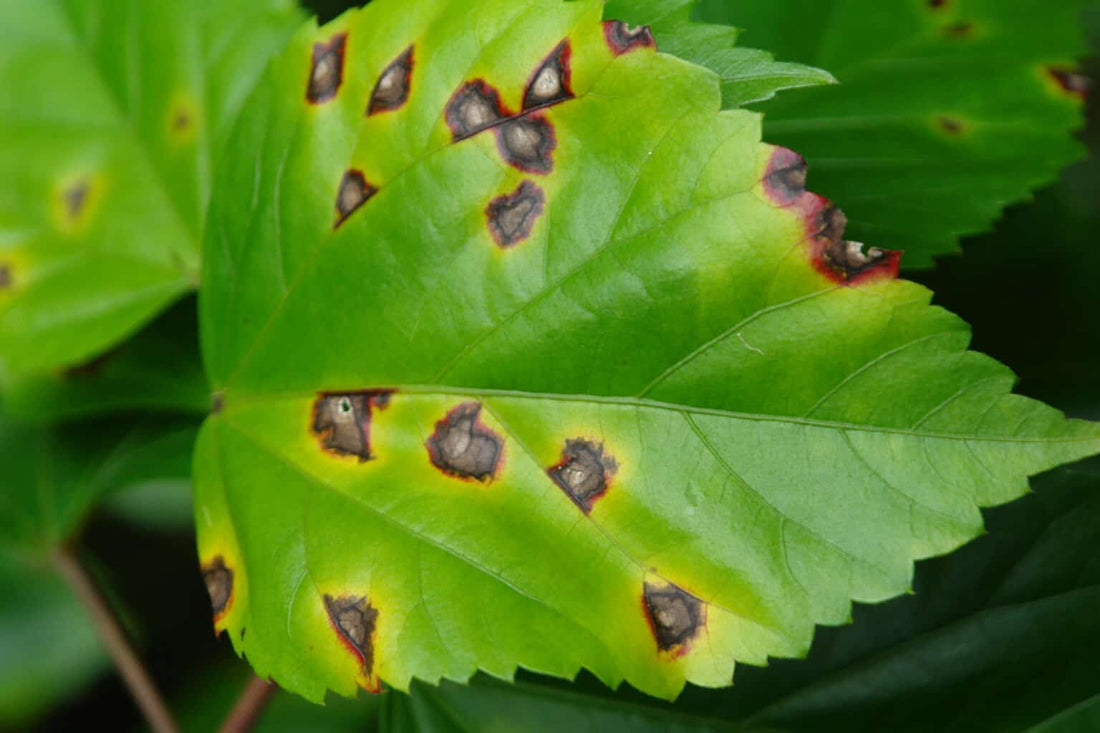How to Treat Leaf Spot on Indoor Plants
Leaf spot is a common issue among house plants and can quickly spread if not treated properly. This fungal or bacterial infection causes brown or black spots on leaves, often resulting from excess moisture or poor airflow. Understanding how to identify and treat leaf spot is essential for keeping your indoor plants healthy and vibrant.
What is Leaf Spot?
Leaf spot refers to a range of fungal and bacterial infections that create dark, often circular spots on a plant’s leaves. These spots can grow and merge, eventually leading to leaf loss. The condition is especially common in high-humidity environments, making it a frequent problem for indoor houseplants.
How to Identify Leaf Spot
Leaf spot is easy to recognize. You’ll see small, dark spots that may increase in size or spread across the leaf. Infected areas often appear damp, and over time, leaves may yellow and drop. Philodendrons, pothos, and dracaenas are among the plants that are especially prone to this problem.
Common Causes of Leaf Spot
Several factors contribute to the development of leaf spot:
- Poor Ventilation: Stagnant air encourages fungal and bacterial growth.
- Excess Moisture: Water sitting on leaves, especially in humid conditions, can lead to fungal infections.
- Unclean Plant Surfaces: Dust and debris can harbor bacteria, contributing to infections.
- Overcrowded Plants: When plants are packed closely together, it can limit airflow and encourage disease spread.
Treatment Methods for Leaf Spot
Taking action early is the best way to prevent leaf spot from damaging your house plants. Here’s how to treat it:
- Isolate the Affected Plant: To prevent the disease from spreading, move the infected plant away from other indoor house plants.
- Remove Affected Leaves: Use sterilized scissors to cut away any leaves with spots. Dispose of them to prevent spores from spreading.
- Natural Remedies: Use a mild solution like diluted hydrogen peroxide, neem oil, or baking soda spray. These treatments are gentle on the plant but effective against fungi and bacteria.
Preventing Leaf Spot in the Future
- Improve Air Circulation: Place your plants in an area with good airflow. If you have multiple house plants, space them out to reduce crowding.
- Adjust Humidity Levels: Leaf spot thrives in high humidity. If possible, keep humidity lower for plants prone to leaf spot, such as philodendrons and pothos.
- Avoid Overwatering: Water only when the soil feels dry to the touch and avoid getting water on the leaves.
- Regular Dusting and Cleaning: Dust can harbor bacteria, so clean leaves regularly with a damp cloth to keep them clear of debris.
Final Thoughts on Leaf Spot Prevention
Leaf spot can be managed with proper care and attention. By keeping your indoor plants clean, maintaining good airflow, and using preventive measures, you can protect popular plants like the fiddle leaf fig, prayer plant, and zanzibar gem plant from this frustrating issue. Leaf spot doesn’t have to spell disaster for your indoor garden— with the right approach, your house plants can stay healthy and spot-free.





